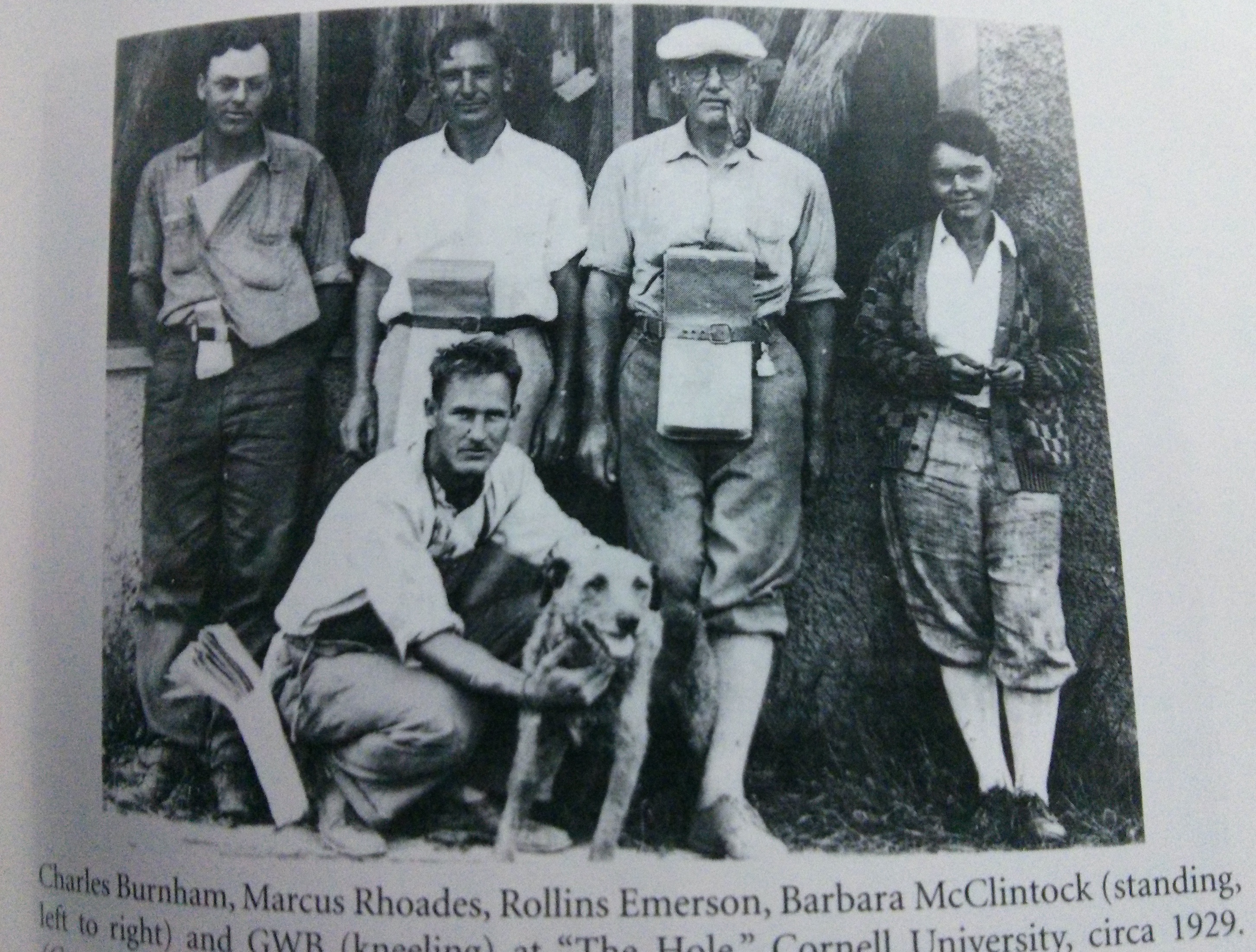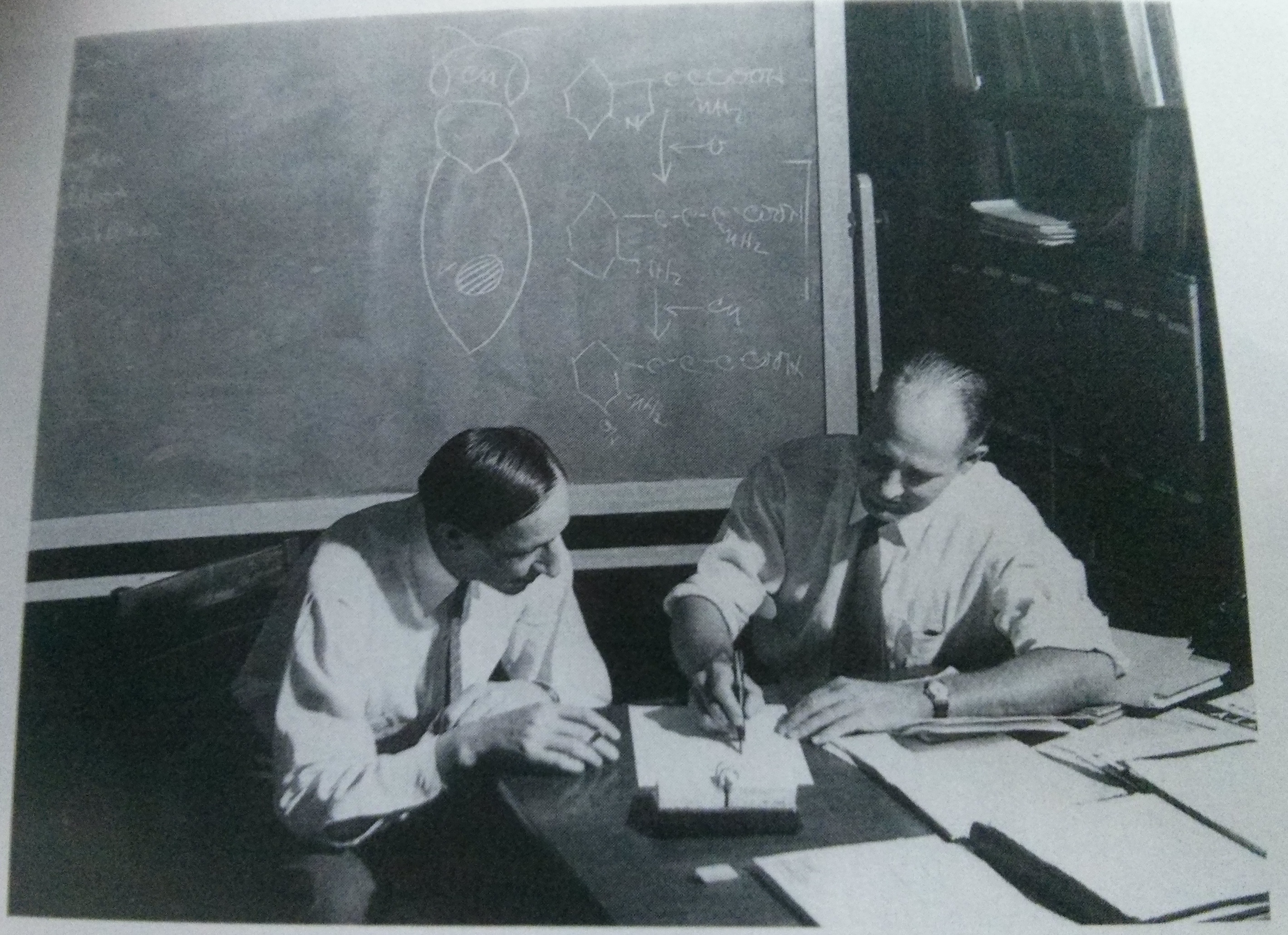George Beadle An Uncommon Farmer II

Picture from An Uncommon Farmer: Charles Burnham, Marcus Rhoades, Rollins Emerson, Barbara McClintock , and GWB (kneeling).
I’ve just finished the second half of George Beadle An Uncommon Farmer and am still in the sad afterglow of the epilogue which briefly recounts Beadle’s last years of descending slowly into the terrible grip of Alzheimers disease. I expected the second half of the book to lag a bit as the major scientific accomplishments of Beadle were behind him. However, Berg/Singer piece together the later parts of his life in a set of compelling stories that chronicle the rise of the scientist-amdministrator/scientist-statesman as Beadle gets involved in establishing national guidelines for radiation exposure in the wake of the invention of atomic weapons; in his building up the Caltech Biology Department to a world-class powerhouse (4 nobelists among his recruitees: Max Delbruck, Edward Lewis, Renato Dulbecco, aand Roger Sperry); in his winning the Nobel Prize and the accompanying festivities that entailed; in his surprise acceptance of the Chancellorship of the University of Chicago; and his post-retirement resumption of research on the origin of domestic corn. Woven through these stories, in the typical understated fashion of the authors are the personal trial’s and travails of Beadle and his family as he goes through a divorce and remarriage and faces difficulty and sadness with his children and his father.
In total, the book is a beautiful homage to Beadle and continuously gets at the effect that Beadle had on others. A man who maintained an approachability and eschewed the formality and pomp that could easily be adopted by a Nobelist; whose “unself-conscious warmth and … genuine excitement to be with someone who shared his passion for science” left a strong affect on those who knew him throughout his life. It is a remarkable life positioned at a remarkable time in science and whose groundbreaking work is easy to take for granted in an era where his bold and early hypotheses have now been resoundingly verified and the merger of biochemistry and genetics, once two different academic domains/silos, are now fully merged.
I would reccomend that any student of biology read this book due to the large cross section of relevance that Beadle’s work hit upon and the by the elegant descriptions of the scientific, political and personal lives of many of the towering figures of science. A beautiful, beautiful work.
There are a few thoughts that I had in regards to science:
- First, as mentioned as an explicit theme in other books like Apprentice to Genius, there is a strong vein in this book about how being associated with top scientists is such a strong component to the lineage of other successful scientists. Beadle benefitted from his close associations with Emerson, Mclintock, Morgan, Sturtevant, Pauling, Ephrusi and Tatum and as one reads this book, an outsider would be forgiven for thinking of science as a terribly incestuous endeavor. Its true now and probably even moreso then when there were fewer positions and money was rarer. There are even a few other lineages I hadn’t known about: Renato Dulbecco to David Baltmore and Howard Temin; Tatum to Joshua Lederberg; Delbruck to Seymour Benzer; Emerson to Barabara McClintock.
- Several times early in his career Beadle jumped ship to associate with more interesting people/projects than the one he had been assigned to. Having a knack for the fields that are flourishing with interestign questions is boon for any scientist; being able to follow those insights is a bit harder.
- The powerful tendency of the top people whether in collaborations or frenemy-type relationships, is to surround oneself with the absolute brightest people you can. In this book that chronicles the rise of biochemical genetics, I don’t think there is a strain of modern biology that is more than two degrees of separation from Beadle.

Picture from An Uncommon Farmer: GWB (right) with Boris Ephrussi. On the chalck board is a depiction of the drosophila tranplantation experimen they worked on to elucidate the biosynthesis of eye pigments.